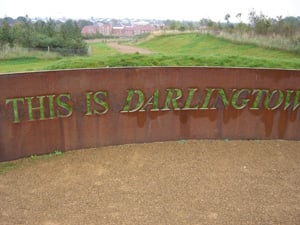Words of wisdom
Sarah Butler shows how writers can use their consultative skills to support and improve regeneration.

Place, and particularly urban place, is inextricably linked with the people who live in and pass through it. Every place holds an infinite number of stories, and has the capacity to be changed and transformed by those stories. Our relationship to the places we know is imbued with and constructed through the stories we hear, tell and make up about those places. If regeneration is about making places better for people to live, play and work in, then there seems a clear role and opportunity for us to engage with this idea of story when considering how to carry out successful regeneration schemes.
UrbanWords develops innovative work exploring and advocating the role of creative writers and creative writing in the process of regeneration. A recent period of research and development resulted in the web resource, ‘A Place For Words’, which brings together critical thinking, tips and guidance, and case studies of best practice in this field of work, as well as providing a blog for visitors’ comments. The ideas in this piece are explored in more depth on the website.
Writers tell stories. They find form for complex ideas. They show us the world anew. They explore the connections that exist between people, places, events, and times. Writers search for what is not said; the currents that exist underneath what is made explicit. Writers create work that is a pleasure to read. If we accept that stories are crucial to our understanding of place; that examining and engaging with stories can help us think about how places might be successfully regenerated; and that writers have specific skills to enable this, then how might this work?[[Regeneration needs to engage with the people who have a relationship, positive or negative, with that place]]
Writers can work within the context of art in the public realm, exploring the stories connected to a place’s past, present and future, to create work that can permanently or temporarily animate a place. This world is dominated by the visual arts, but there is immense scope to engage with writing and narrative. One example is a development called Westpark in Darlington, where the poet W H Herbert worked with developer Bussey and Armstrong Projects to embed the stories of the area’s past within the fabric of the new development. In his poetry plan for the development, Herbert stated his goal: “to present the people moving into Westpark, and those who visit its amenities, with a coherent narrative of their surroundings which has been built into the site, and can be gradually uncovered through interacting with the space”. More details can be found on the A Place For Words website.
There is also an area of work which sits somewhere in between public art, community arts, communication strategies, and community consultation, that is rich with possibilities for making places better. If a place is physically regenerated, but the people living there have no connection or commitment to it, is that successful regeneration? Regeneration needs to engage with the people who have a relationship, positive or negative, with that place. Writers can work with communities of people to explore, express and strengthen their relationship to place. This work recognises the power of individual stories and the importance of individuals’ and communities’ emotional connections to place.
Writers can carry out effective, creative consultation that seeks to draw out the complexities of people’s personal relationships to a place in a way that is useful and informative for those deciding how to change and improve that place. Writers can enable people to think creatively about how they use and experience a place, finding a way to get past ‘I want a slide and a swing’, and ‘I hate x, y and z’, to explore creative solutions and possibilities. A writer’s skill in finding form for complex ideas can then enable them to create pieces of writing which can articulate these ‘findings’ in a way that is accessible and understandable to those making decisions about those places.
So often we in the arts concentrate on getting involved early on in regeneration schemes. This is undeniably important, but we also need to bear in mind that regeneration doesn’t stop once the building stops. If places are to work, the people who live and work in them, as well as visitors, need to positively identify with and own those places. There is a role for writers here, to enable people to develop their relationship to a place by exploring their own stories and the potential new narratives of a new development. When we see place as somewhere we can play in and play with, we can see it as something we have agency over; such empowerment can effect positive change for individuals, communities and places.
Join the Discussion
You must be logged in to post a comment.